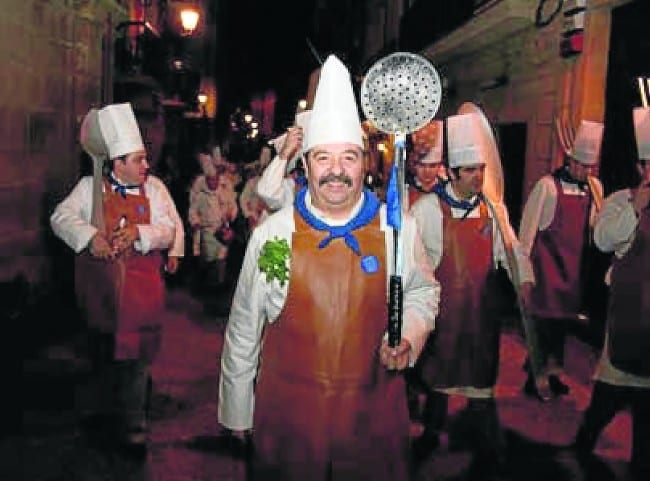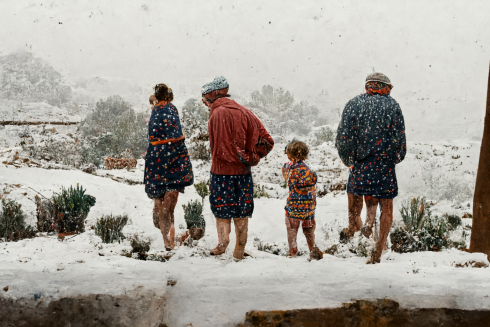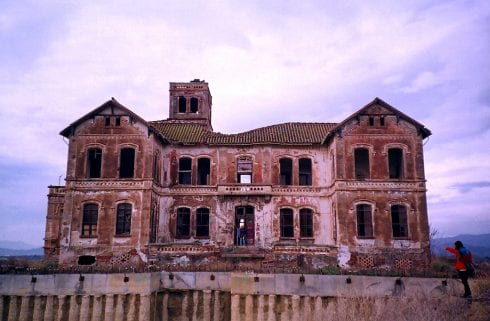
FOOD is both a way of life and an elevated art form in San Sebastian.
From its glittering firmament of 16 Michelin stars to its painstakingly created pintxos, Donostia, as it is known in Basque, is a city in thrall to food. At the vanguard of this culinary movement march the legendary gastronomic societies.
Members-only clubs, the txokos of the Basque country have been nurturing some of Spain’s finest cooking talent since 1870 and continue to draw locals (traditionally only men) together to cook for each other.
Every January, the huddled streets of the Parte Vieja surge with thousands of chefs hammering out an earsplitting beat on drums as the txokos lead the celebrations of San Sebastian’s feast day. La Tamborrada’s roots are religious, with regional pride at the fore, but the fiesta’s army of marching chefs symbolises perfectly the military precision Donostiarras adopt in the kitchen.
San Sebastian’s most famous society is the Gaztelubide, and every year its members lead La Tamborrada. Jose Ramon Mendizabal, known as Mendi, is this year’s Tambor Mayor (or Drum Major, a military term used to describe the man chosen to lead the cooks of the Gaztelubide).

He welcomes us inside the Gaztelubide, which nestles between La Concha’s golden crescent and the basilica of Santa Maria del Coro. A smattering of members sit playing cards. Looking down on them, a photograph shows the original founders from 1934 sitting down to dinner.
Mendi has been a member since 1993, a status he only achieved when his father died, after which, according to society rules, a son on the waiting list can automatically take his father’s place. “My son will then go on to take my place,” Mendi explains.
The following night they will raise the flag of the city in front of thousands at Plaza de la Constitución. Pride swells in his voice. La Tamborrada is, he says, “the most important and the most emotional fiesta.
The fiesta in the summer – Semana Grande – is a bit more touristy. This is more ours and for the people from here.”
The Gaztelubide’s 250 members include Martin Berasategui (three Michelin stars), Andoni Luis Aduriz (two stars) and Luis Irizar, the patriarch of modern Basque cuisine. It’s a staggering roll call of talent, but inside its kitchen the great and good of world cuisine rub shoulders easily with the man in the street.
Mendi is keen to stress this egalitarian spirit. “Here there are members who are celebridades, such as Etxenike [Pedro Miguel Etxenike Landiribar], a famous scientist, but right next to him you can find a street cleaner, and they are sitting together and having dinner,” he says. “What you see inside the society is what you see in the street.”
The txokos have, however, traditionally been the preserve of the Basque male, and some of the older txokos still prohibit women from becoming members.
“A few years ago, women were not allowed here,” Mendi says. “Now they can come in to have lunch and dinner on Saturdays. Little by little it is changing.”
Given the expertise of men in the kitchen, I ask if Basque children normally learn to cook from their their fathers.
“The mothers,” he says without hesitation. “It’s they who have cooked all their lives, and it is they who have invented new recipes. My mother was the centre (in the kitchen); she dominated everything.”

As for the influence of chefs such as Arzak or Berasategui, pioneering proponents of the Basque nueva cocina style of cooking, Mendi is more circumspect.
“I think the influence is stronger from the societies than from the nouvelle cuisine,” he says. “Nouvelle Basque cuisine is based on the products of the area and the traditional ways of cooking in this area but also in discovering new methods. We use new methods here but not as much as the big chefs. The problem here is space. Sometimes you have to share the kitchen with another member, so you can’t use a very sophisticated method that requires lots of space if there is another person cooking.”
Tomorrow’s menu is a classic representation of traditional Basque cuisine – fish soup, hake with kokotxas (hake cheeks) and salsa verde and solomillo. The cellar is stocked
with the finest local nectar: txakoli from Getaria, cider from Astigarraga, a selection of
Riojas, including a Reserva 2001 chosen to commemorate last year’s 75th anniversary.
As there are more members than places at the table, Mendi acknowledges “there will be a bit of a fight to get in”.
The absence of one fond friend will be particularly mourned. The beloved Basque dish of angulas, traditionally served on the feast of San Sebastian, has almost vanished from societies menus and only one, Euskal Billera, has included them this year.
The prohibitively high cost of these delicious small eels (€800 for a kilo at the local fishmongers) has seen a gradual decline in their use. Mendi says they thought about including angulas on the menu, but opted for the kokotxas instead.
“This year, we weren’t sure, because we were offered angulas for €500 per kg,” he says. “But it doesn’t show solidarity with so many people unemployed if we are here eating angulas, so we decided to go for something a bit more modest.”
A cheaper alternative, gulas, is available, but the exactingly high standards of the cooking in these societies prohibit the use of inferior substitutes.
“We try to use the proper products,” Mendi says. “Even if you are just eating potatoes, it should be the best potatoes; if you eat eggs, they should be the best eggs. The gula costs €30 a kg but they are not the same. In the societies we eat authentic and good-quality products.”
The quest for culinary excellence permeates every stratum of society here, and the popularity of the txokos continues to swell this devotion. Rafael Aguirre, a local historian and expert on Basque culture who has written a book on the txokos, reveals that the societies’ are thriving.
“Forty years ago, there were about 35 societies. At the moment, there are 119, and the largest ones have about 300 members,” he says. “Every year there are three or four gastronomic societies set up, and the new ones are completely open to women.”
Cost is one reason that, especially during a recession, the societies are a popular way of keeping entertaining expenses to a minimum. “On a special event, maybe the birthday of your son, you join together, maybe 20 people,” says Rafael. “In a gastronomic club you prepare your own meal and you pay maybe €10 per head. If you go to a restaurant you pay maybe three times as much,” he explains.
The teeming rain drenching the thousands crammed in to Plaza de la Constitución the following night seems only to ignite their passion when the Gaztelubide’s cooks ascend the stage.
As the chimes of the plaza clock signal midnight, the crowd, many wearing chefs’ hats and carrying small barrels, accompany those drumming on stage as the strains of Raimundo Sarriegui’s ‘La Marcha de San Sebastián’ reverberate around the square.
From the raised podium, Mendi conducts proceedings as undiluted local pride raises the decibel level of the crowd’s singing. For the next 24 hours San Sebastián marches to the beat of its own drum in a city where the heroes wear a uniform of pristine white.
This article won the Santa Cruz prize for the best contribution to La Revista, a magazine run by the Anglo-Spanish society.








